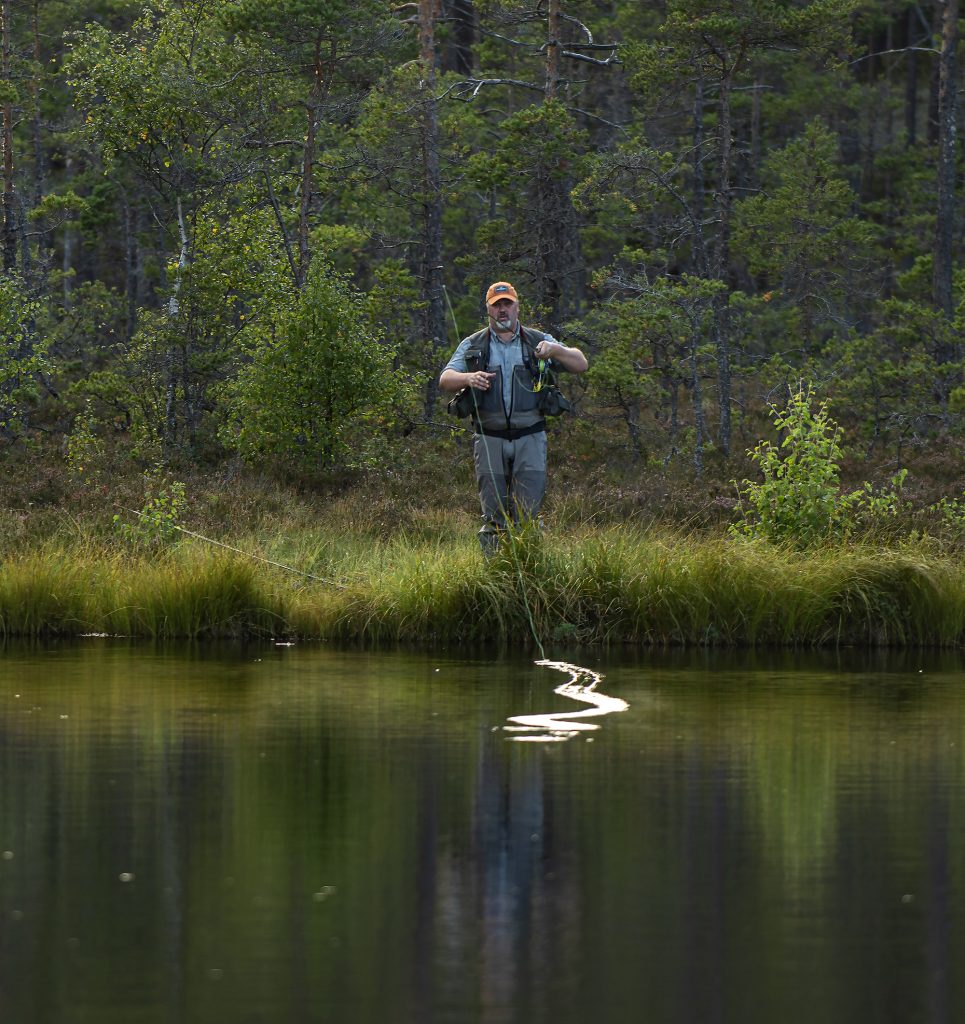
XL size caddisflies whet the appetite and curiosity of many trout. Even when insects are sparse on the surface, a stripped Grandis can be a winner on the river or trout lake. Here, renowned Swedish fly tyer Håkan Karsnäser explains how to tie his popular dry fly treat.
By Peter Lyngby
(this artickle has been published in the danish magazine “Sportsfiskeren” and the online magazine “In The Loop Magazine
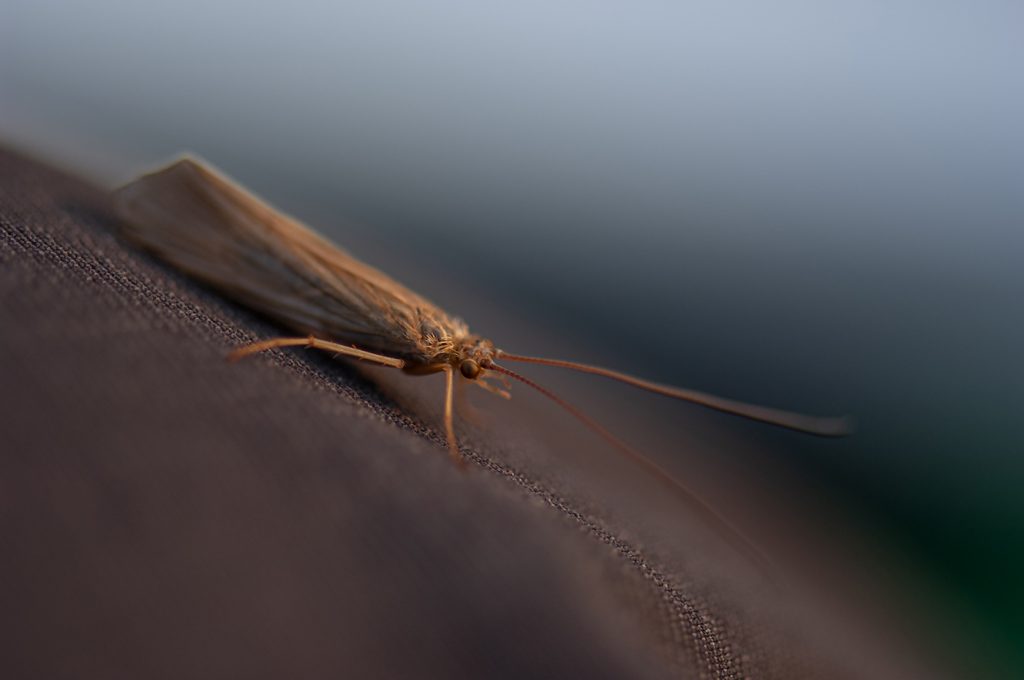
There are approximately 1700 species of caddisflies in Europe, and worldwide, almost 15,000 insects belong to this family. In comparison, we only have just over two hundred different mayfly species along European rivers and lakes. Like the mayflies, including the large mayflies, the hatching of the largest caddisflies usually peaks in June. Among fly fishermen, the spectacular mayfly fishing tends to attract a lot of attention, but the fish are not blind to the caddisfly treats, which are usually seen in the late evening when the mayfly fishing has died down. The imprint of such large insects skittering awkwardly on the surface may be stored in the fish’s memory for later use, or perhaps the trout are simply opportunists who don’t let a potentially energy-rich snack float by unnoticed. Either way, the large caddis flies are present until September and October, where they can be fished both as imitations or as attractor flies that can provoke violent strikes on the surface of the river or trout lake when fished blindly and actively.
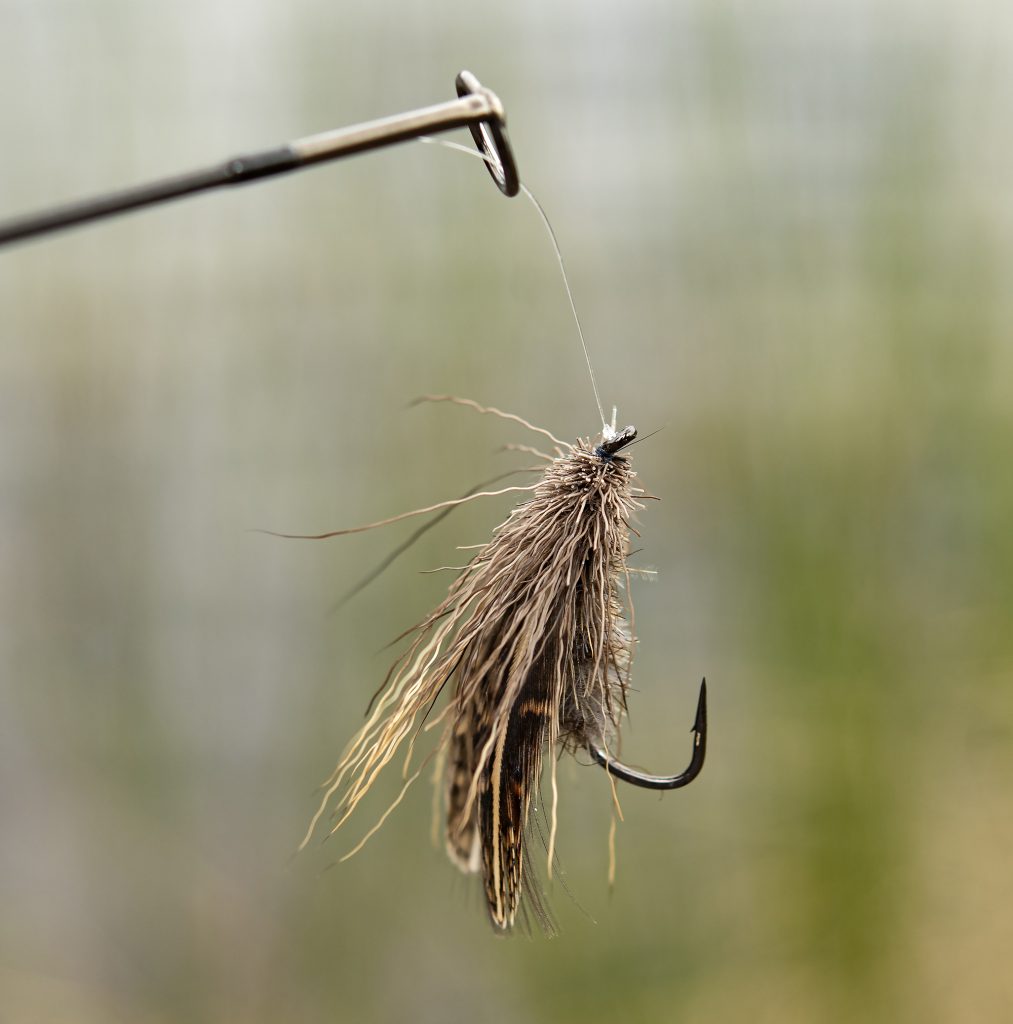
Reliable dry fly
The characteristic serrated and backward-facing wings of the caddis are well known in fly fishing, such as the classic Europea 12 of French origin and the famous Swedish Streaking Caddis, which is an imitation of the large spiral caddis – the largest of our local caddis species. In Latin, the large spiral caddisfly is called Phryganea Grandis, which is why the insect is often simply referred to as Grandis among fly fishermen and fly tyers. Among the supporters of the large caddisfly is the versatile Swedish fly tyer Håkan Karsnäser, who has received much praise for his own Grandis imitation.
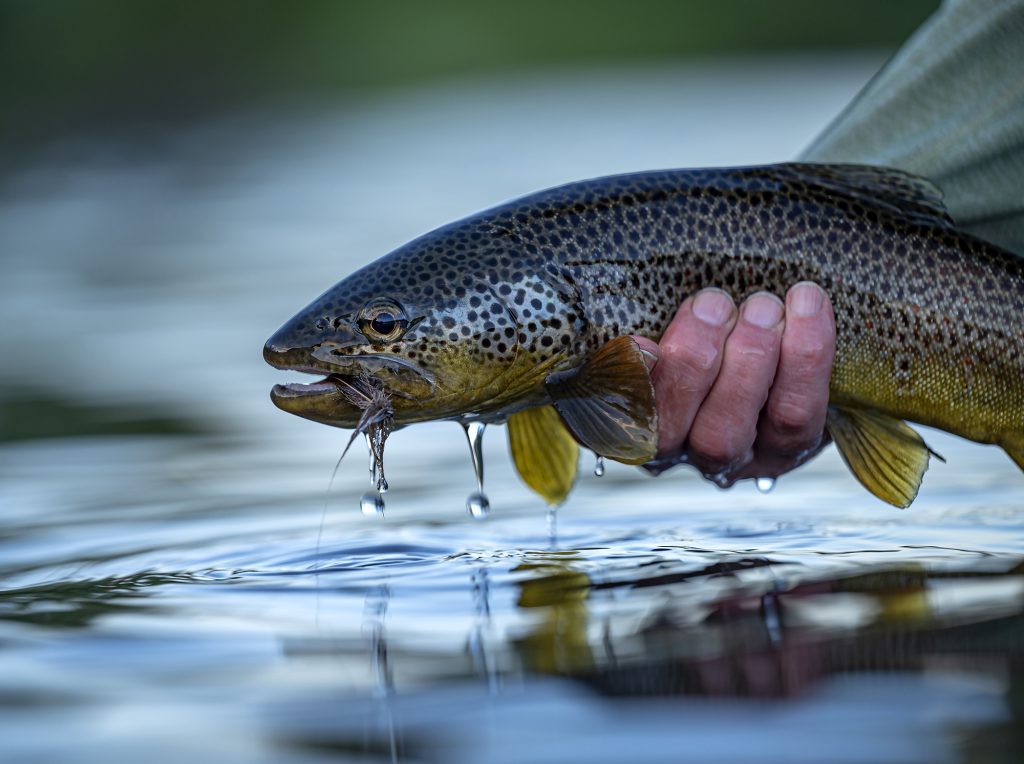
Trout are opportunists, and some of them have a hard time letting the large Grandis pass by on the surface.
– The mission with my dry flies is usually based on making them durable and ensuring good buoyancy. This also applies to Grandis. Like many others, I often fished Streaking Caddis, which can be quite effective in trout lakes, but I wasn’t entirely satisfied with its floating properties, which rely solely on the deer hair head. So about three years ago I started experimenting with CDC feathers for the Grandis, and after a visit to an Italian fly-fishing fair I got inspired by the Italian style of tying with deer hair. I also tried different versions of lacquered feathers for the wings. Of course, the lacquered feathers don’t add much to the floating properties, but they do enhance the profile and the illusion of the caddis’s distinctive wings. I ended up using partridge wing feathers for the wings, as the wing feathers are naturally stronger and more flexible than the bird’s other feathers, says Håkan Karsnäser.
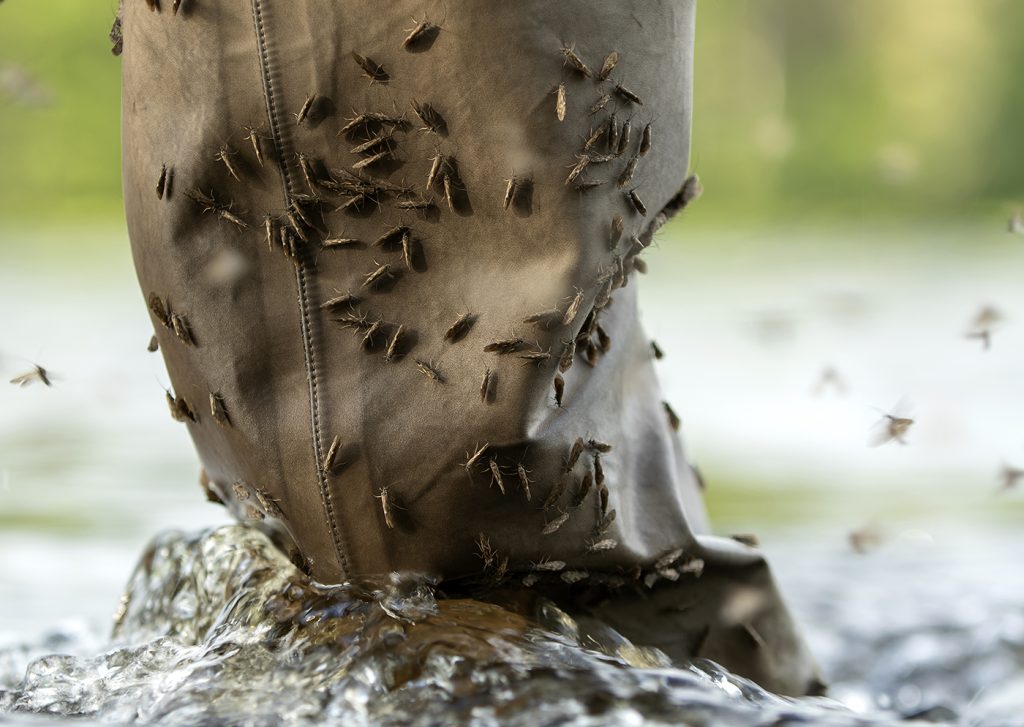
Big flies’ beckon
Grandis has already spread across Scandinavia, the fly has gained several loyal fans who enjoy its attraction well into the fall.
– If you experience hatches of the big caddis flies, it goes without saying that Grandis is worth keeping in the box, but the fly is also well worth trying when the insect life slows down and the fish’s instincts need a little extra warming up. In both rivers and trout lakes, blind fishing with a striped Grandis can be the thing to do, and the fly also attracts big fish to the surface on days without much insect life or at the end of the season. In the river, you can let it swing across the current or slowly strip it to get the fly moving on the surface. The same applies in the trout lake, where it’s important to adjust the retrieve so that the fly mimics a stranded caddis. When the giant Grandis comes streaking across the shiny surface, there’s a good chance of a spectacular trout strike. In fact, we had a great catch of Grandis already during the test period, which was completely outside the caddis season, says Håkan Karsnäser.
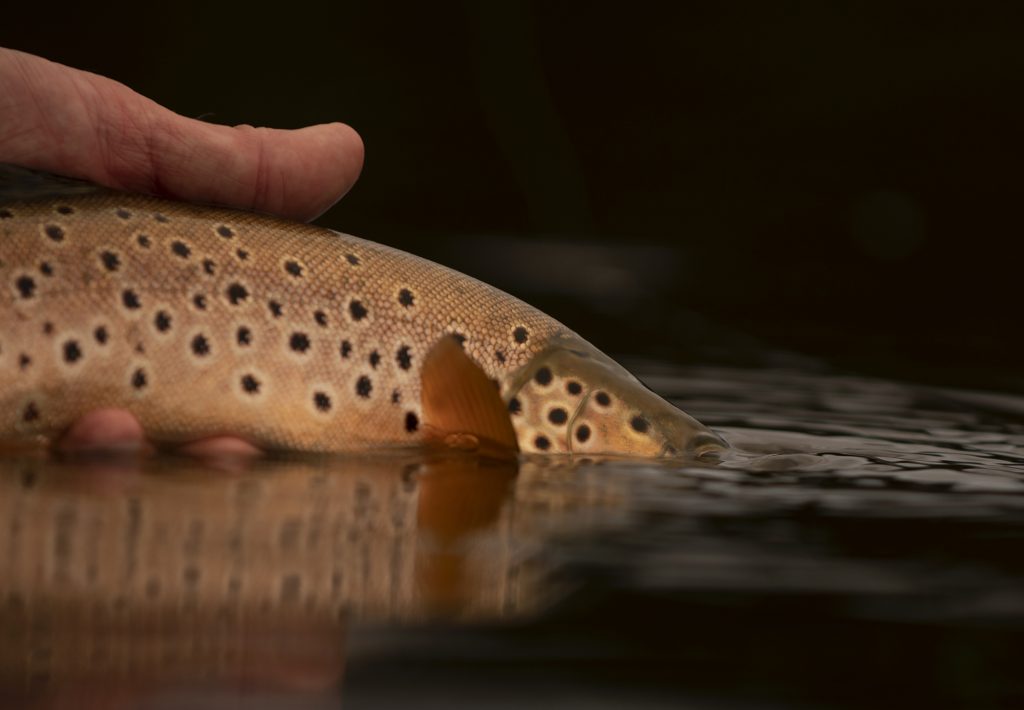
Grandis are primarily evening and night active and usually hide during the daytime.
Spring fly variants
Although Grandis is designed to mimic the largest caddis flies, Håkan Karsnäser occasionally varies the pattern to imitate the smaller specimens. If you’re fishing dry throughout the season, he recommends trying to tie a series of variations while you’re already tuned in to caddis proportions.
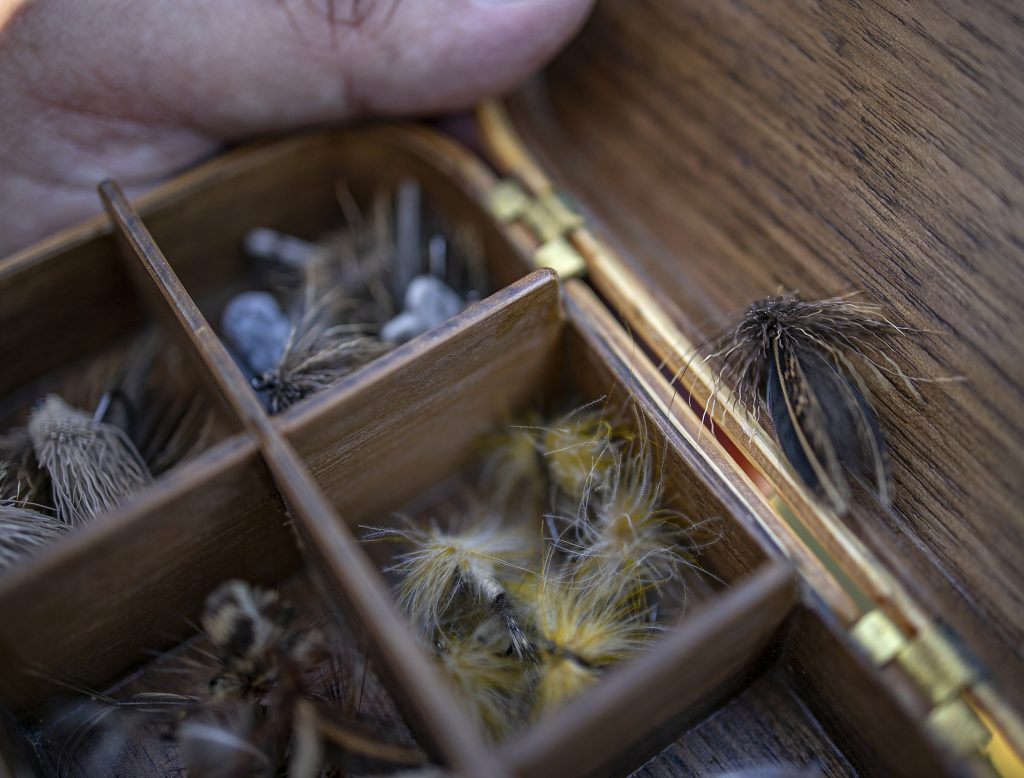
– My original Grandis is quite a large dry fly. I tie it on a size 6 long shank hook and the whole fly is usually 3.5-4 centimeters long. However, the pattern can easily be scaled down to smaller caddis imitations. I also make Grandis using the same recipe in size 8, but when I make smaller caddis flies, I use other birds’ feathers for the wing. There are many options depending on the desired size and color, but I always use the wing feathers to ensure the durability of the fly. Hackle and body feathers rarely last the and break too often during fishing. The deer hair head is best suited for the slightly larger dry flies, and for the smallest caddis flies I spin CDC feathers for both the head and body. The CDC feathers are magical, and sometimes I just spin whole CDC feathers for the body and leave out the seal wool. Unfortunately, the feathers are in high demand at the moment due to bird flu, so it can be difficult to find good quality in the shops,” explains Håkan Karsnäser.
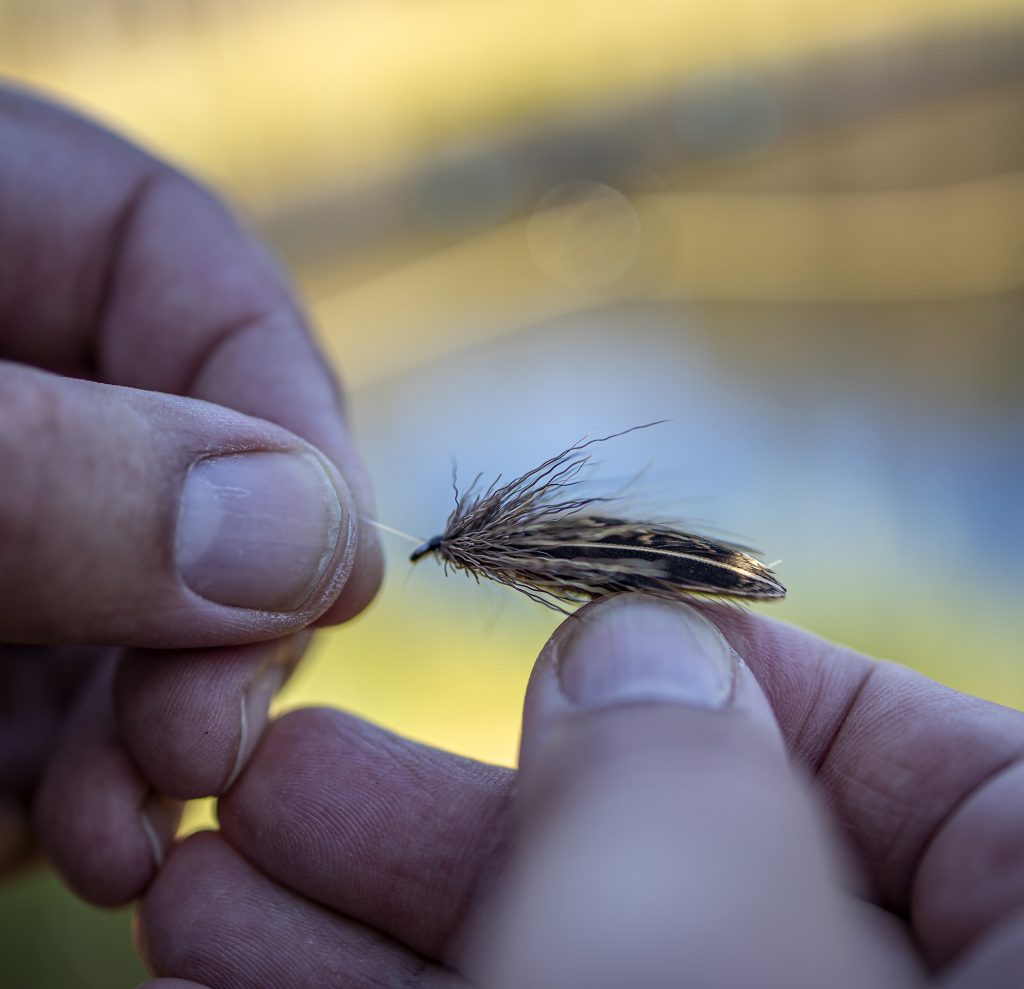
Tying tips
Grandis is a simple fly in terms of the number of materials. If you ask an experienced fly tyer like Håkan Karsnäser, Grandis is also easy to tie. Especially when compared to the smallest dry flies in the box, which require more skill at the vise. However, as with many simple flies, it’s important to focus on the right proportions, and a few technical grips are important to master.
– The right tools and good quality materials are half the battle. First and foremost, make sure to choose quite thin and soft deer hair for the head. Otherwise, it will tease in the dubbing loop and give a slightly clumsy result. As some of the tips of the deer hair should be left in the finished fly, it is of course also important to be precise with the length of the hair when placing it in the dubbing loop. To give the fly the right silhouette of a caddis, it is also essential that the wing has the right profile. Make sure to choose matching wing feathers from both of the bird’s wings, so that it’s basically a mirror image of the feathers you end up tying in as a roof on top of the CDC feather. It takes a bit of practice to choose the right size feathers, as they become a little slimmer after painting. The procedure is to apply a little varnish on both sides of the feather and then slowly pull the wet feather through two fingers so that it tapers slightly before it dries. You may want to try this first by simply wetting the feathers with water instead of the varnish. It’s easier to watch the fly-tying video than to explain. When dubbing the body, I would recommend using Marc Petitjean’s Magic Tool. These simple tools are an invaluable help when combining and preparing several materials for the same dubbing loop, concludes Håkan Karsnäser.
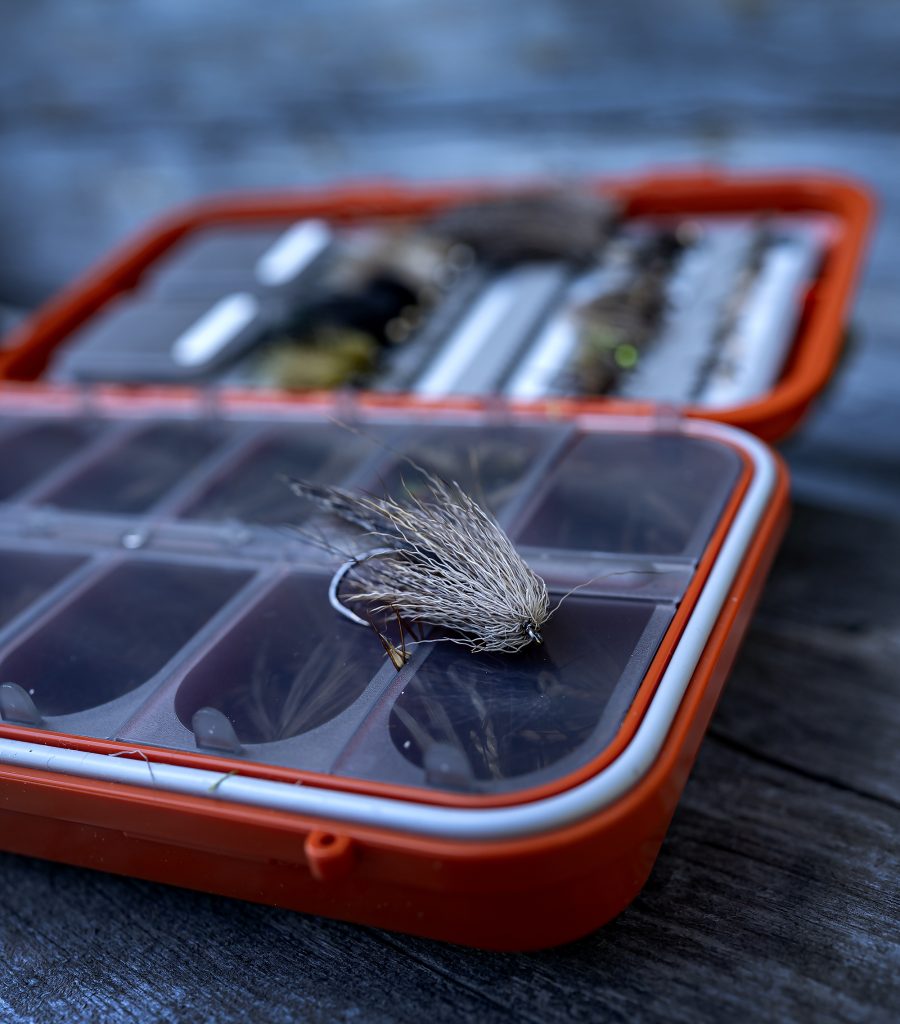
Grandis
Hook: Ahrex Dry Long FW 570 #6
Thread: Black GSP
Body: Brown seals fur or similar and natural sand-colored CDC
Wing: Natural brown CDC and partridge feathers
Head/thorax: Deer hair
Step by step
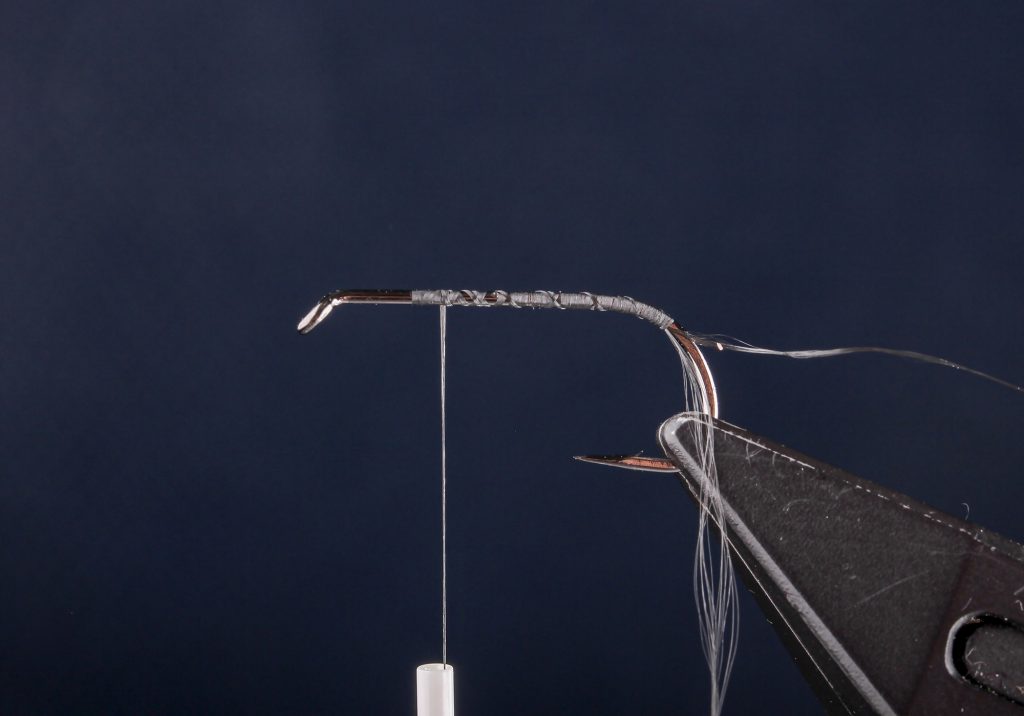
Attach the tying thread to the hook shank and prepare a dubbing loop at the back.
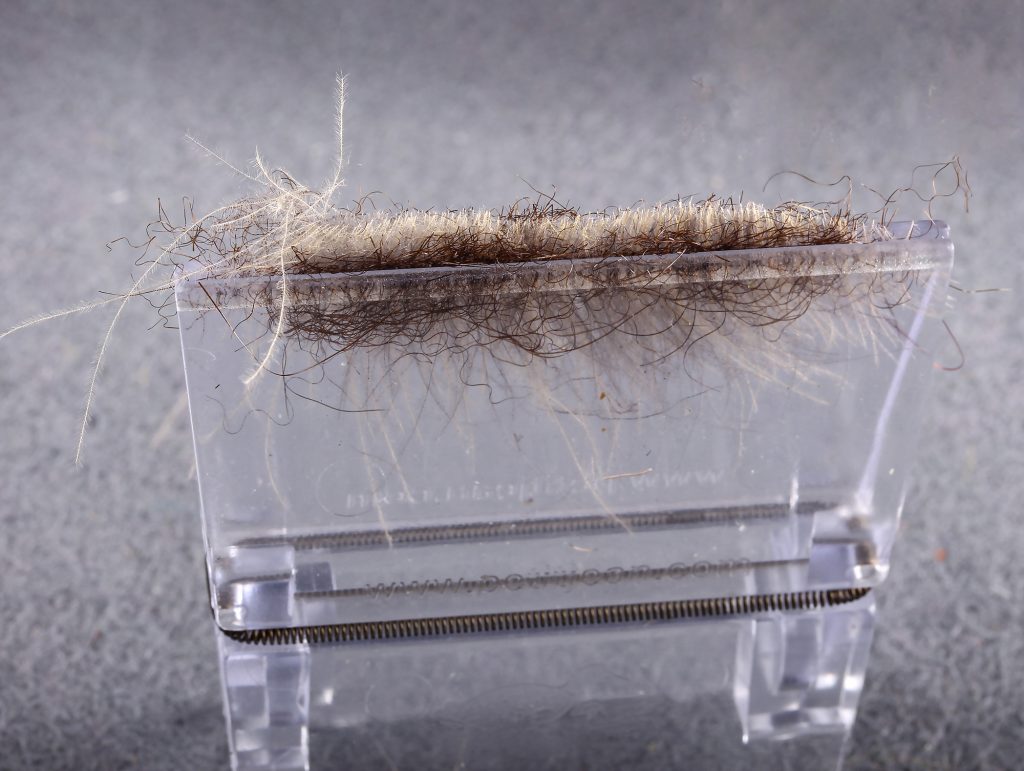
Prepare seal wool and both CDC feathers in a dubbing clamp.
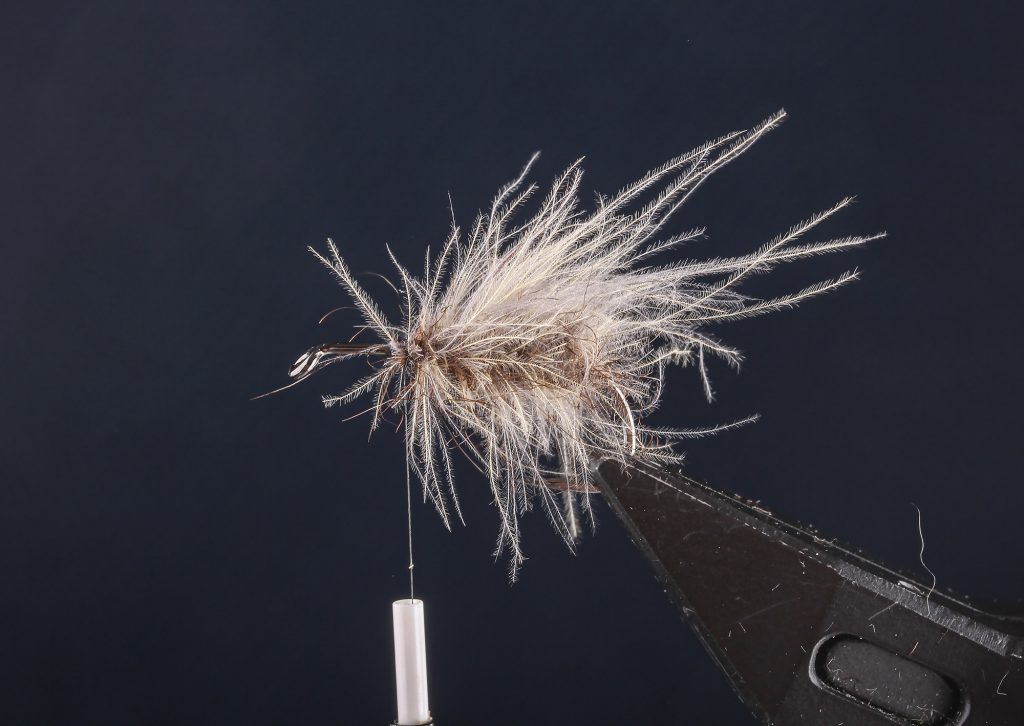
Spin the mixture in the dubbing loop and turn it to just under 3/4 of the length of the hook shank.
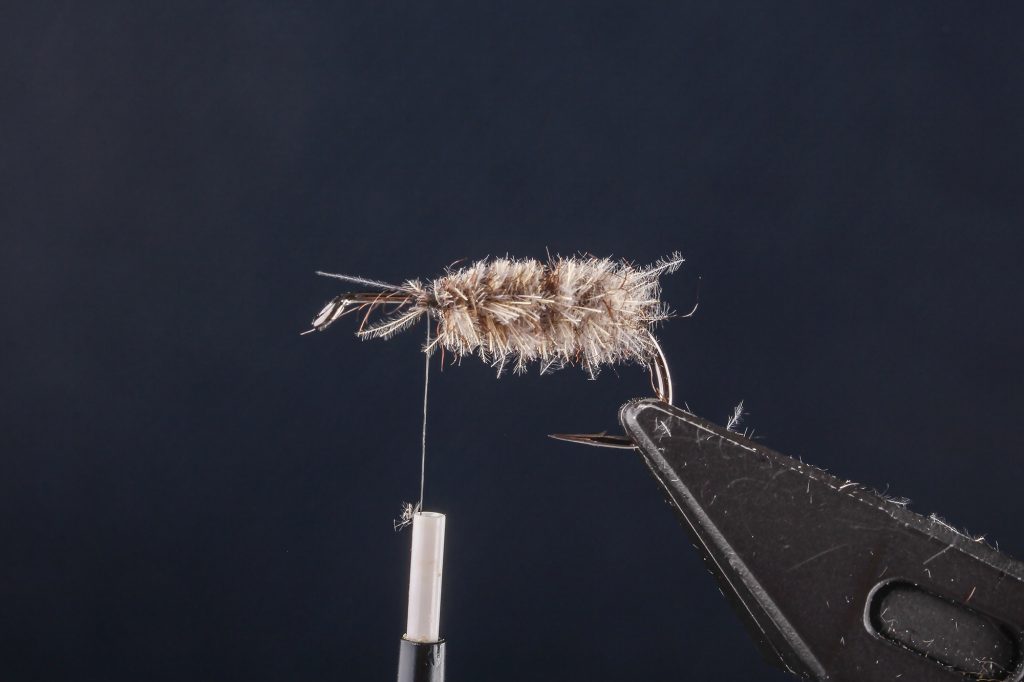
Trim the body with scissors to a conical shape that is slightly thicker at the back.
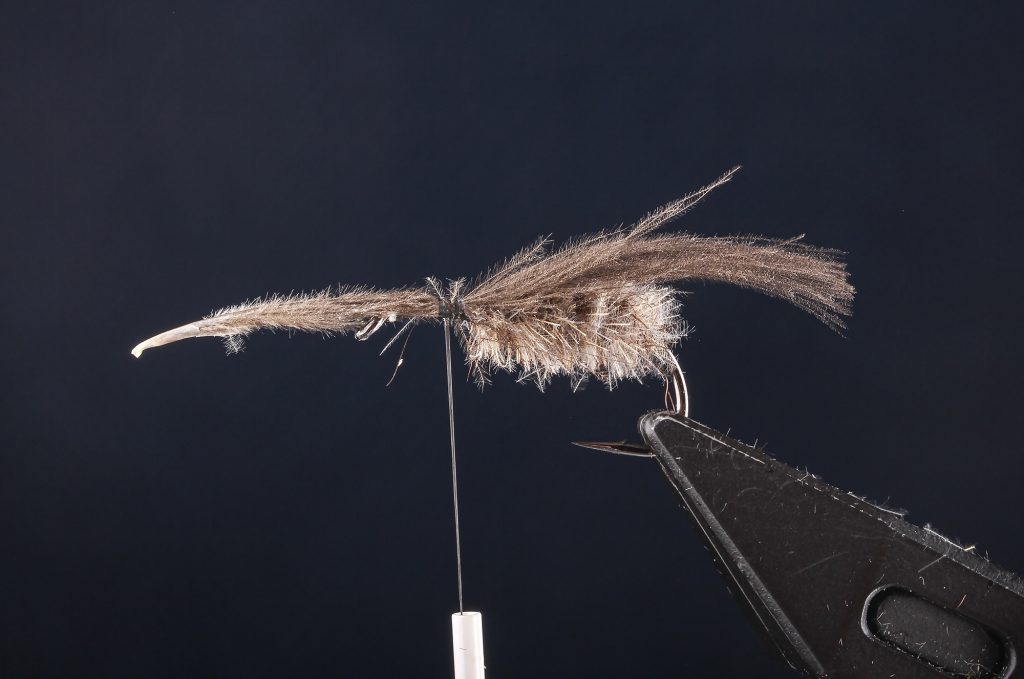
Tie in a natural brown CDC feather so that it lies on top of the body.
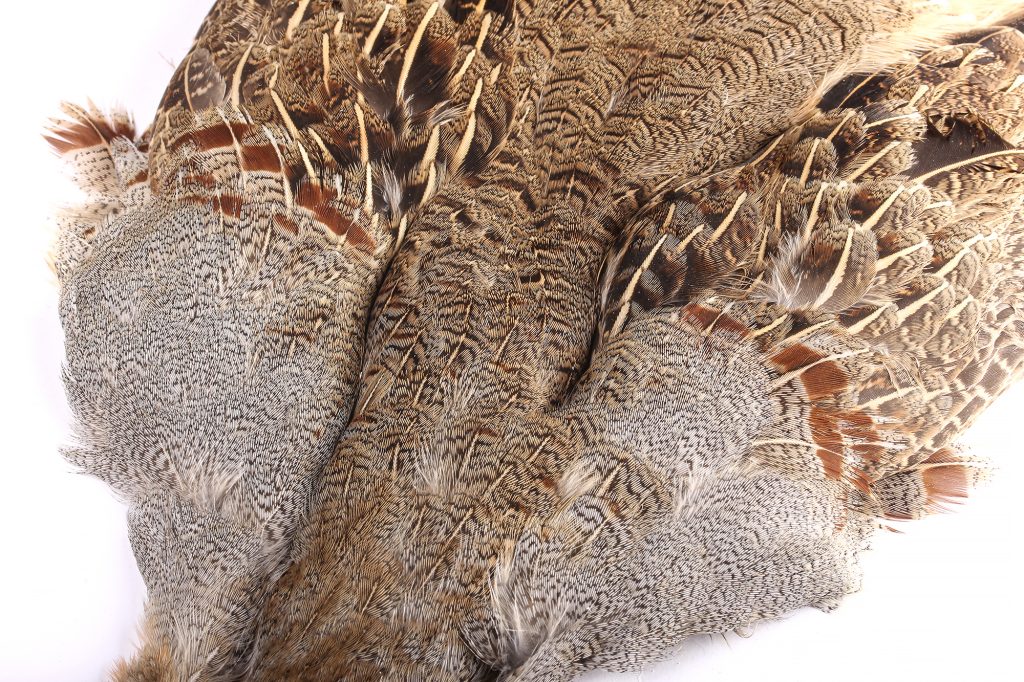
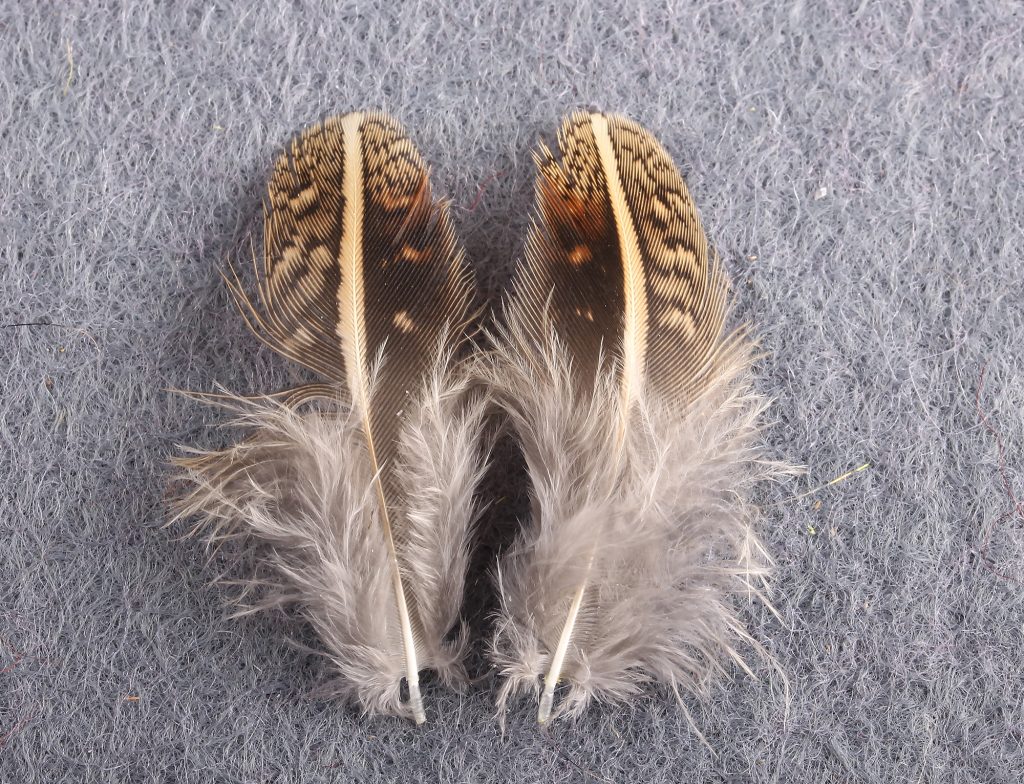
The best symmetry on the wings is achieved by making them from matching partridge wing feathers.
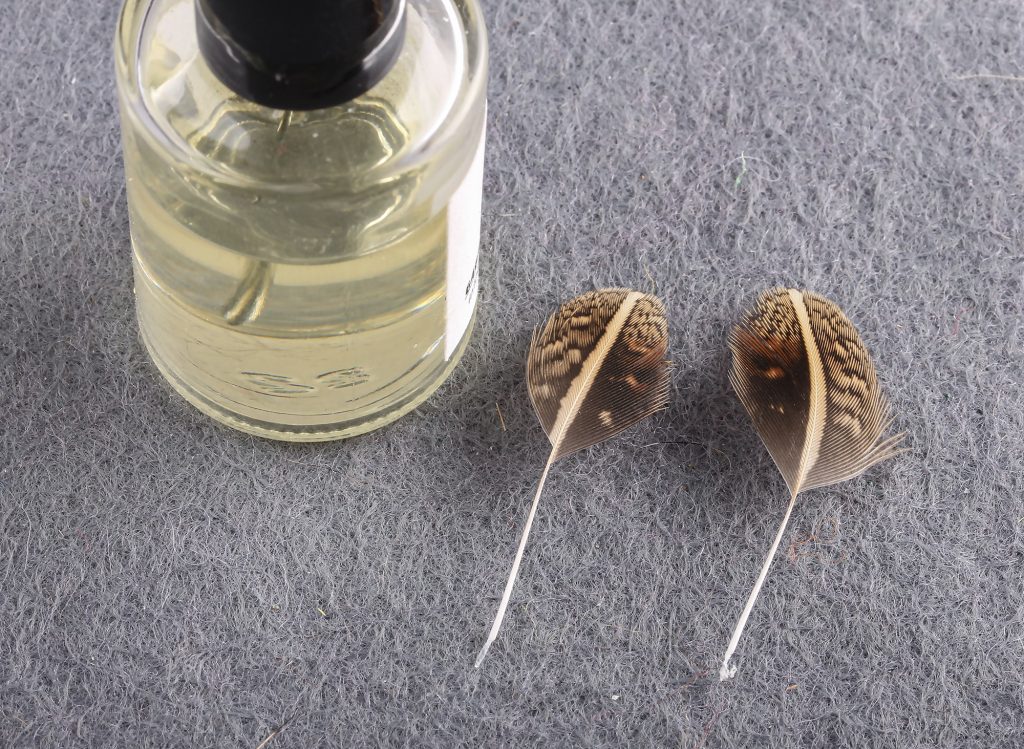
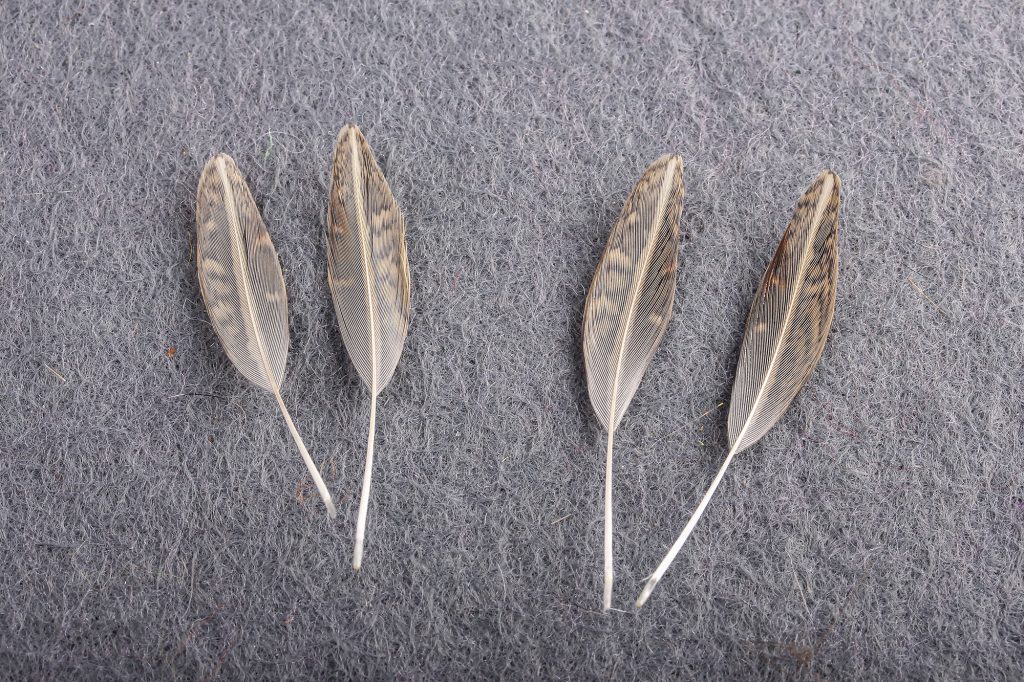
Varnish the feathers with a bit of fly tying varnish.
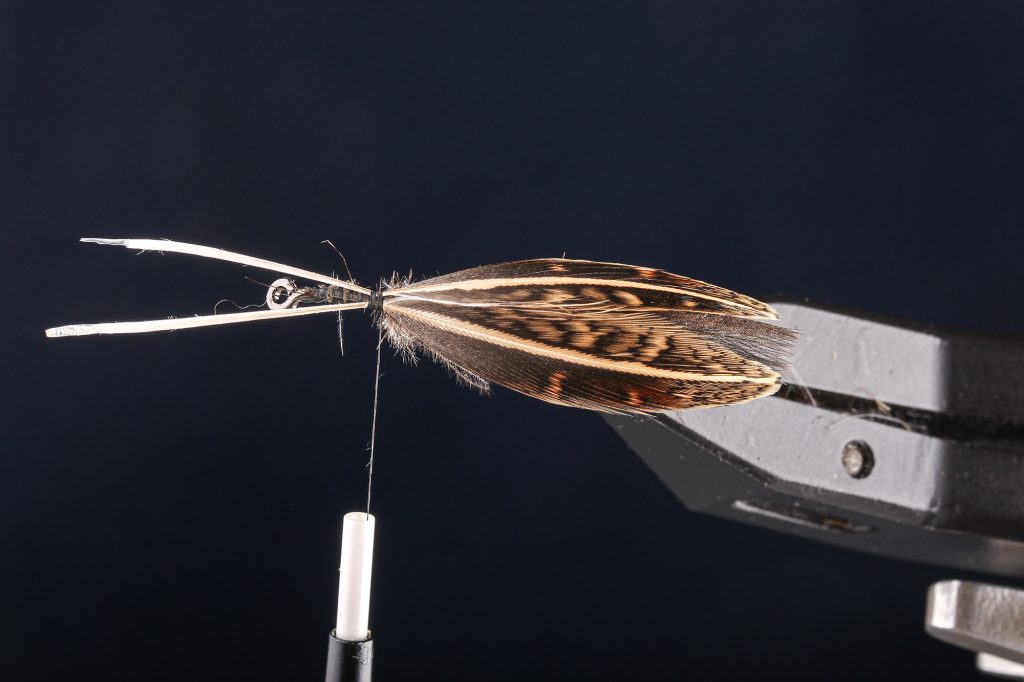
Tie in the two partridge feathers separately so that they form a roof on top of the CDC feather.
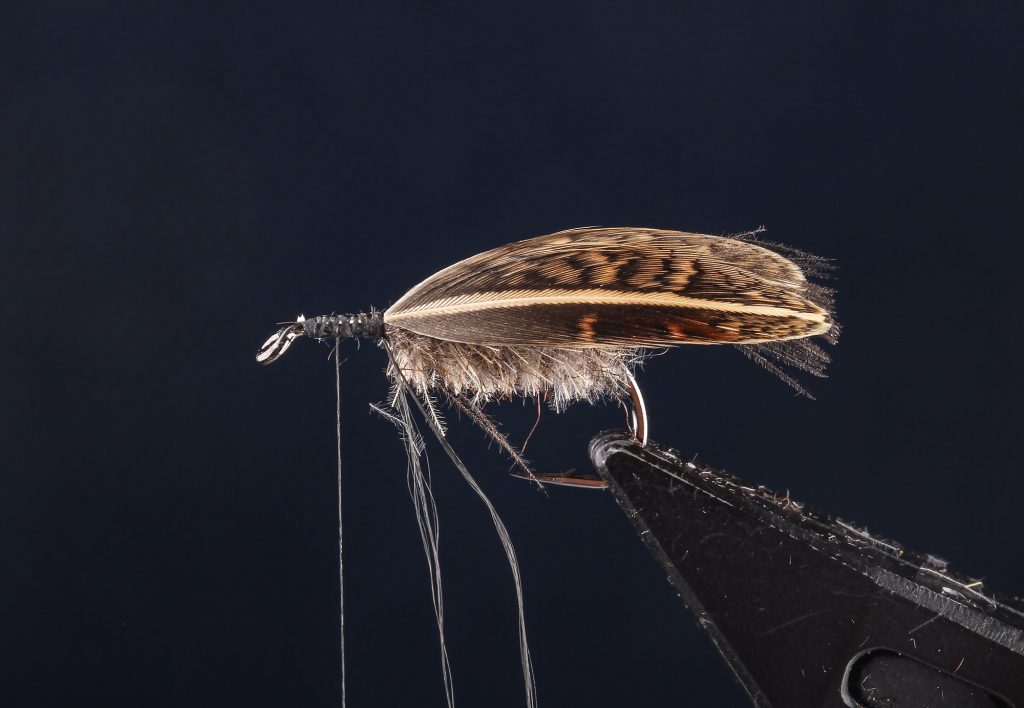
Create a base for the head of the tying thread and prepare a dubbing loop in front of the wing.
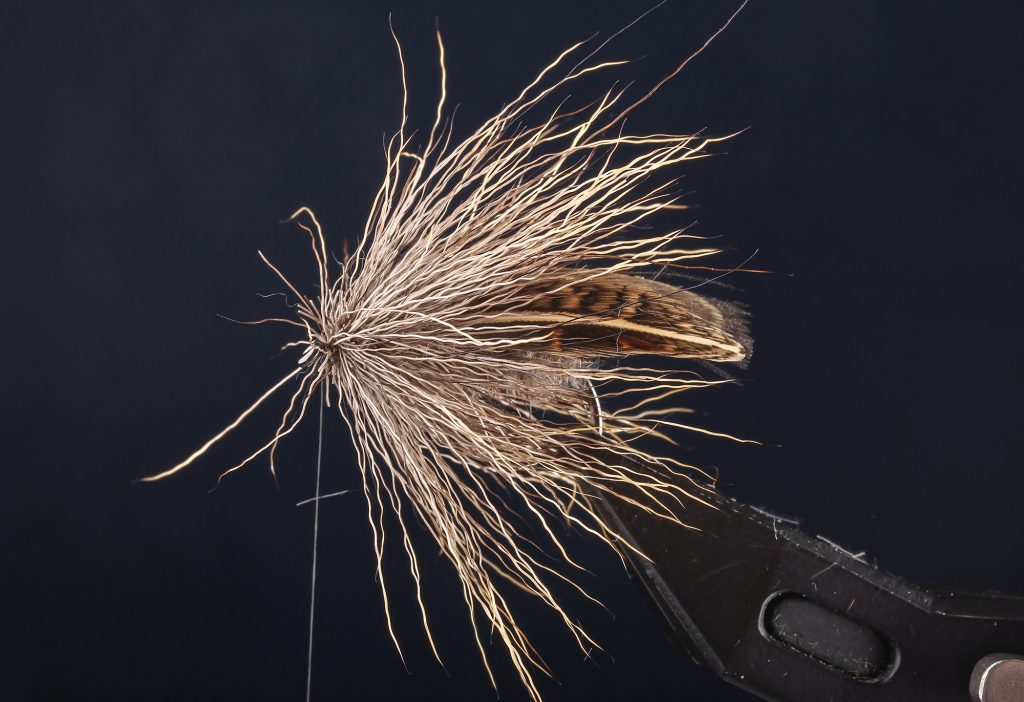
Spin deer hair in the dubbing loop and twist it tightly like the fly’s head.
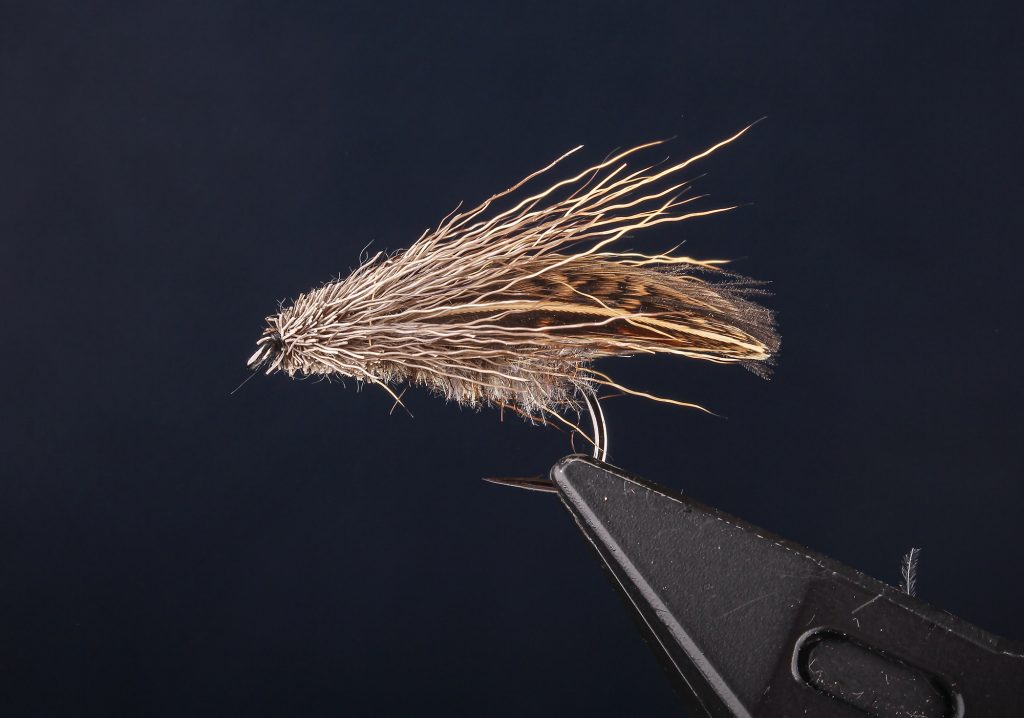
Trim the deer hair with scissors. First close to the underside and then the profile on the sides and top, leaving a bit of the tips of the deer hair.
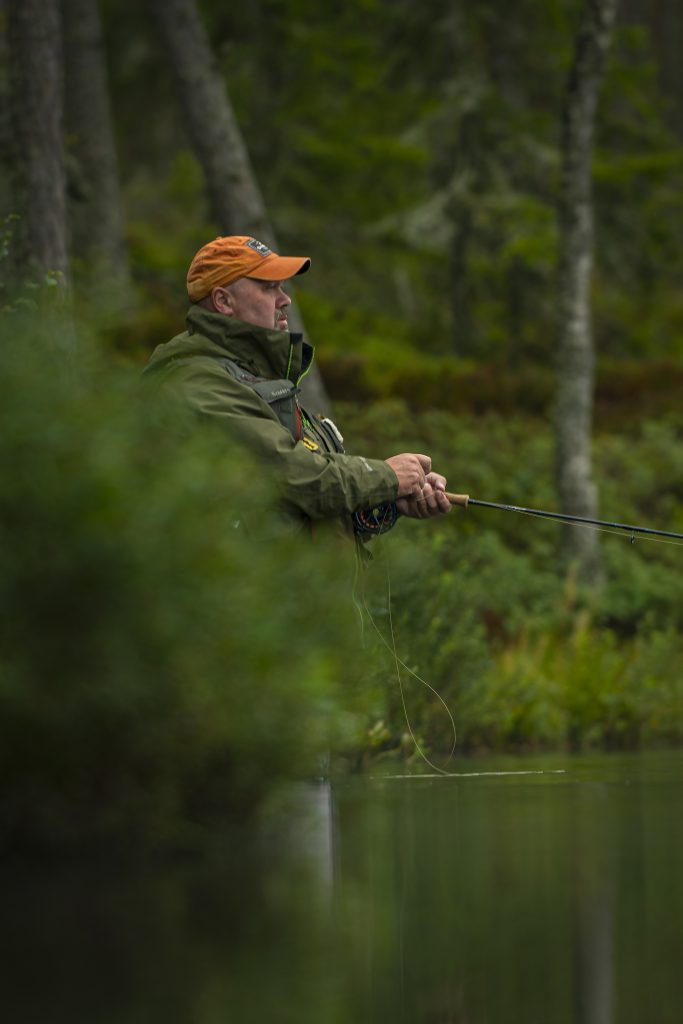
Håkan Karsnäser in full concentration during the intake.
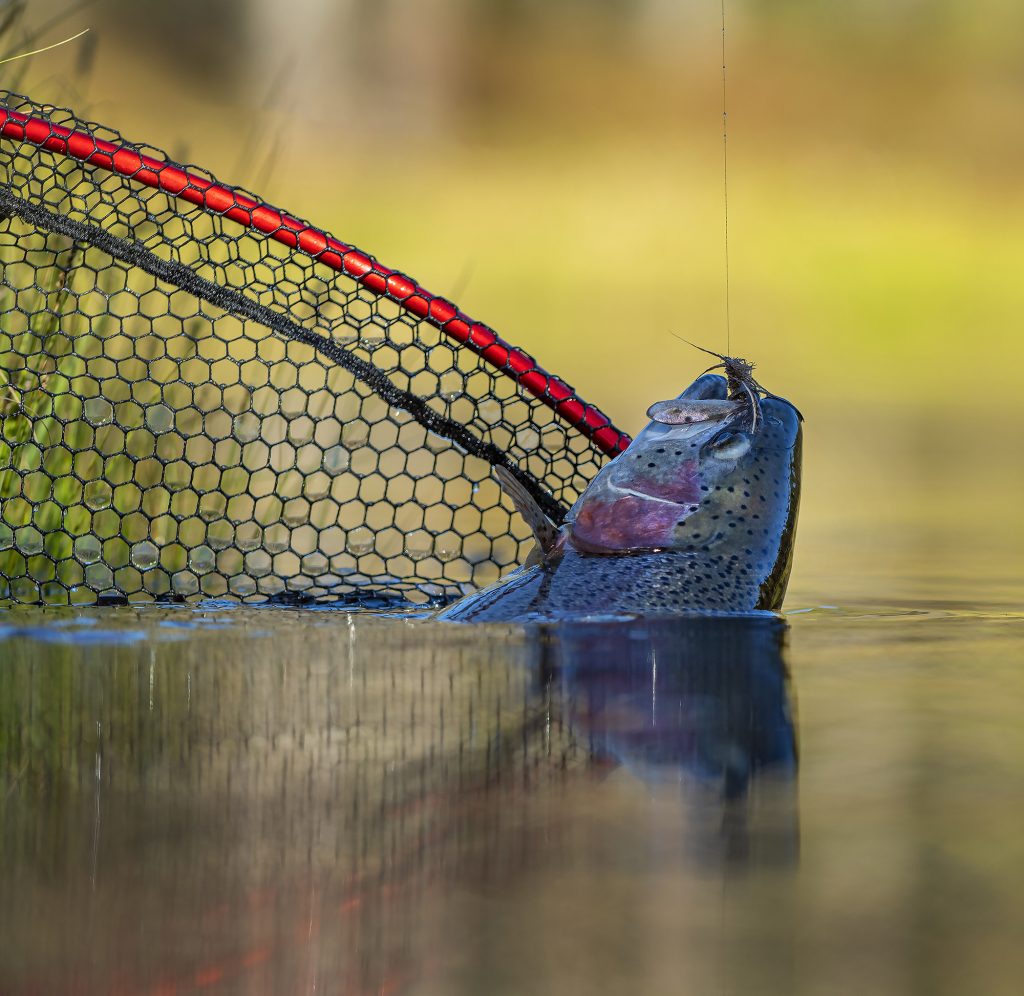
The rainbow trout here threw itself over a striped Grandis in the middle of the day.
